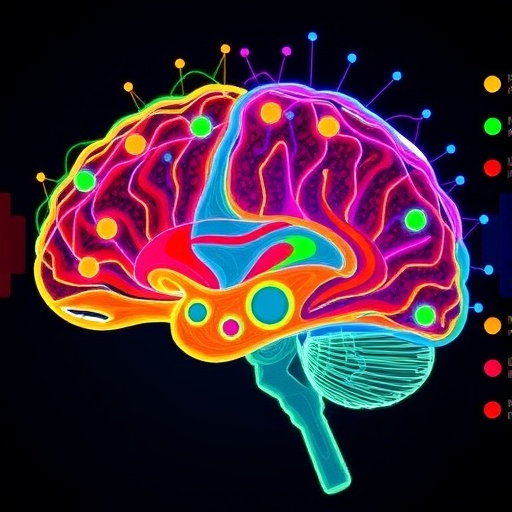In a groundbreaking advancement for neuroscience, an international coalition of researchers has unveiled the most comprehensive and intricate developmental maps of the mammalian brain to date. Spanning species from mice to humans, this interdisciplinary endeavor offers an unprecedented window into the early stages of brain development—a period critical to understanding both typical cerebral maturation and the origins of numerous neurodevelopmental disorders.
Neurodevelopmental conditions such as autism spectrum disorder and attention deficit hyperactivity disorder, which affect an estimated 15% of children and adolescents globally, have long posed enigmatic challenges due to the complex and dynamic processes underpinning early brain formation. The brain’s developmental phase in humans alone is uniquely extended compared to other species, underscoring the necessity of detailed developmental blueprints in illuminating the intricate gene expression patterns and cellular differentiation events that sculpt the brain’s architecture.
At the helm of this initiative, Dr. Hongkui Zeng of the Allen Institute emphasizes the revolutionary nature of these findings. By precisely charting when and where critical developmental genes are activated, the research delineates the pathways through which progenitor cells evolve into a multiplicity of mature brain cell types. This genomic and transcriptomic lens is poised to unravel the molecular disruptions that precipitate disorders such as autism and schizophrenia, potentially guiding the design of diagnostics and therapeutics tailored to specific developmental windows.
The synthesis of this work appears as a suite of twelve meticulously peer-reviewed studies published across Nature’s family of journals. These papers collectively map out the cellular diversity and lineage trajectories within the brain while interrogating how extrinsic environmental factors—including sensory experiences and social interactions—influence neurodevelopment. This integrative atlas not only bridges cross-species comparisons but also pioneers novel investigative methodologies that promise to accelerate brain research in the coming decade.
Central to these findings is the revelation that brain cells undergo protracted maturation, extending well beyond prenatal stages into postnatal life and adolescence. Such prolonged developmental trajectories were exemplified in a study focused on the mouse visual cortex, where researchers traced over 770,000 individual cells. Using single-cell RNA sequencing and sophisticated computational modeling, they constructed developmental trajectory trees demonstrating how excitatory neurons diversify and refine in response to experiential stimuli, such as sensory input at eye-opening—a seminal milestone marking critical periods of cortical plasticity.
Delving further into cellular diversity, an in-depth exploration of telencephalic GABAergic inhibitory neurons illuminates their vital role as modulators of neural excitability and inter-regional communication. Analyzing data derived from more than 1.2 million brain cells, this study unravels the extensive migratory paths and differentiation patterns of these inhibitory neurons. Intriguingly, the prolonged maturation of subsets of these cells in regions governing cognition and emotion implies an extended temporal window for therapeutic interventions, a prospect especially significant for conditions involving excitatory-inhibitory imbalances.
Harnessing innovative spatial transcriptomics through techniques like BARseq, scientists mapped gene expression patterns at single-cell resolution across the entire cerebral cortex. This revealed that distinct brain areas possess unique ‘cellular signatures’ formed by specific neuron subtype assemblages. Furthermore, they uncovered that sensory-driven activity critically shapes regional identity during development, anchoring the concept that environmental inputs are not mere modifiers but integral architects of brain regionalization.
Collectively, this body of work profoundly alters conventional wisdom regarding neural development. It underscores the brain’s remarkable plasticity during defined sensitive periods extending across early life stages and affirms that environmental interactions actively sculpt neuronal circuits, rather than simply refining a hardwired blueprint. This insight holds profound implications for identifying critical therapeutic windows wherein interventions might recalibrate neural circuitry to mitigate or prevent disorders.
Moreover, the cumulative data set generated by this global consortium furnishes the scientific community with invaluable resources for future research. The comprehensive atlases facilitate cross-species comparisons, enabling translation from animal models to human biology with greater fidelity—a longstanding challenge in neuroscientific research. The publicly accessible datasets also foster collaborative opportunities, promoting an open science model that accelerates discovery and innovation.
The strategic backing of the National Institutes of Health’s Brain Research Through Advancing Innovative Neurotechnologies® (BRAIN) Initiative galvanized these efforts. By integrating cutting-edge neurotechnologies, this initiative is paving transformative avenues for brain research. The milestone achieved through these developmental brain maps exemplifies the successful intersection of large-scale data acquisition, computational biology, and experimental neuroscience.
Experts emphasize that understanding the temporal and spatial intricacies of brain development is foundational to unraveling the etiology of complex psychiatric conditions. Dr. Tomasz Nowakowski from UCSF highlights that this research not only elucidates the mechanistic underpinnings of neurodevelopmental disorders but also provides a scaffold on which future diagnostic and treatment paradigms can be constructed. The identification of precise cellular and molecular vulnerabilities opens new horizons for personalized medicine in neurology and psychiatry.
Importantly, these advances underscore a paradigm shift: brain development is a continuous, dynamic process subject to modulation by both intrinsic genetic mechanisms and extrinsic factors throughout early life. The revelation that neural diversity and connectivity mature over extended periods challenges previous notions and invites a re-examination of therapeutic timing and strategies for brain disorders, potentially enabling interventions during postnatal critical windows.
In conclusion, this landmark compilation of studies constitutes a transformative leap in the neurodevelopment field. By providing granular insight into the cellular lineage, spatial organization, and environmental modulation of brain development, the research charts an ambitious new course for understanding the human brain’s complexity. As these findings permeate clinical and basic research realms, they promise to foster breakthroughs in diagnosing, preventing, and treating neurodevelopmental disorders, ultimately advancing human health and cognitive well-being.
Subject of Research: Animals
Article Title: The new frontier of human and mammalian brain development
News Publication Date: 5-Nov-2025
Web References:
– https://www.nature.com/collections/gjdefhadcj
– https://www.nature.com/articles/s41586-025-08603-0
– https://www.nature.com/articles/s41586-025-09652-1
– https://www.nature.com/articles/s41586-025-09296-1
– https://www.nature.com/articles/s41586-025-09644-1
– https://www.nature.com/articles/s41586-024-07221-6
References: Gao et al., Nature (multiple studies, 2025)
Image Credits: Gao et al., Nature
Keywords: Developmental neuroscience, Developmental biology, Cell development, Cell differentiation, Brain development, Cognitive development, Neurogenesis, Developmental stages




